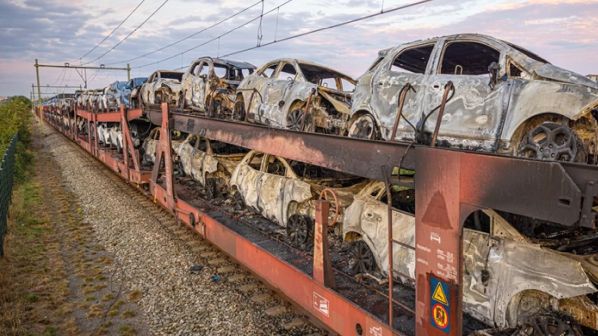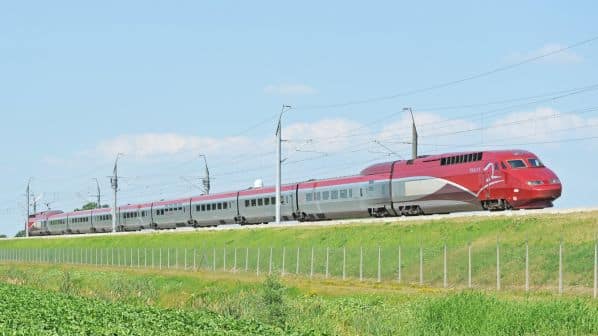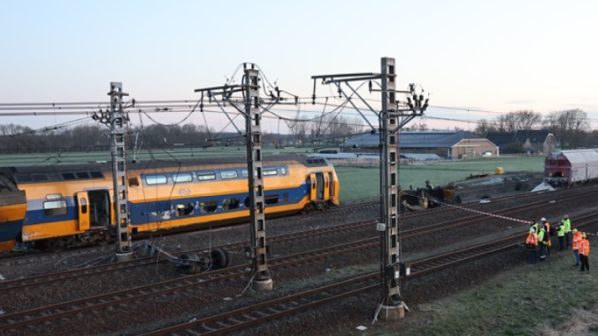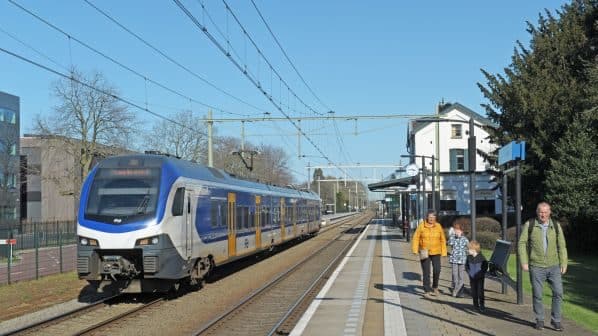AN investigation by Dutch infrastructure manager ProRail has found that a fire on a freight train loaded with hybrid cars, which destroyed 42 cars and four freight wagons, was caused by a faulty overhead wire that had previously been fixed using a temporary repair. The Breda - Roosendaal line was also closed for two days while further repairs took place.
The DB Cargo train was being hauled by an electric locomotive towards Roosendaal, bound for Vlissingen Sloehaven, on September 14 2022 when the overhead wiring broke at Etten-Leur. Wiring then wrapped around the pantograph and was dragged for about 800m, falling onto the cars behind the locomotive and starting fires in three places. ProRail says the wire broke as the improvised repair, which involved placing a temporary wire parallel to the main contact wire, had not been conducted properly.

The broken wire caused a short circuit which triggered the high-voltage system to automatically switch off. This alerted a staff member in ProRail’s infrastructure operational management centre (OBI) that power to the line had been interrupted. However, the immediate cause was not visible.
ProRail says power cuts due to overloading are common on this line, such as when two freight trains draw too much power from the system. The staff member then restored power to the line, not knowing that it was broken, which caused a switch to break, preventing the power from being turned off again for another 18 minutes and causing the fire to grow. The fire brigade then requested the power to be turned off to a large area around the site.

ProRail says the investigation revealed that the repair was required due to wear on the overhead line, which increases the chance of the line breaking. The overhead contact wire was temporarily repaired by a “contribution wire” while the main wire was replaced, a process it has since stopped as there is a greater risk of the temporary wire breaking.
Operation protocols within the OBI have also been modified to ensure catenary is only reenergised in coordination with the train dispatching centre.
The full report (in Dutch) is available here.





